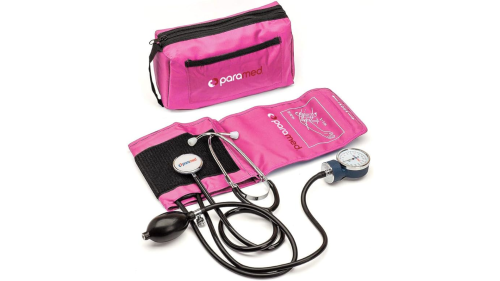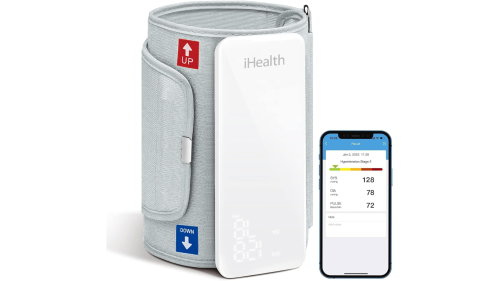One of the things I’m most often asked by students and rookie EMT’s is, “Kelly, how am I supposed to hear a blood pressure in the back of the rig?”
My reply is usually to cup my hand behind one ear and shout, “What?”
Much to my chagrin, few of them take the hint, but honestly, I’d rather deal with those kids than the ones who take a pressure, drape the scope around their neck, and confidently announce, “120/80…"
… for every patient.
Old, young, fat, thin, pink or pale, everybody has a suspiciously normal blood pressure that always ends with a zero.
Just as bad are those who hesitantly stammer, “Uhhhh… 135/79?”
My ears may suck, but my eyes are still pretty good, and try as I might, I’ve yet to be able to find those odd-numbered markings on a sphygmomanometer gauge. Thus, I’m forced to conclude that my rookie either has preternaturally sharp hearing and eyesight, or he’s pulling those numbers out of his rectum.
Judging from the uncertainty in their tone, I usually go with the latter.
Being a guy with a measurable hearing deficit in both ears – too much shooting as a kid without adequate ear protection – I’ve learned a few tricks over the years to allow me to hear what I need to hear in the back of the rig. Sometimes, when the sounds I’m listening for are in the high frequency range where most of my hearing loss is, I have to resort to things like assessing tactile fremitus, or rely on the ears of a trusted partner.
Luckily, Korotkoff sounds are low-frequency enough that I can still pick them out over the rumble of the road beneath my feet, but it takes a lot of practice and sometimes a few tricks to be able to distinguish the real stuff from the road noise.
Here are a few of the tricks I’ve learned:
1. Isolate the patient’s arm from everything else
When you wrap the cuff around his arm, cup your non-dominant hand under his elbow, and tuck his palm beneath your elbow. Lift his arm off the mattress, stretcher rail, or whatever it’s in contact with. If you like to lay the patient’s arm across your lap while you auscultate a BP, lift your feet onto tiptoes to minimize transmission of road noise through the soles of your feet.
2. Use the bell of your stethoscope, not the diaphragm
I spent 18 years in EMS without learning that trick, and it took a Stethoscopy For Dummies class from Bob Page for me to see the light. The bell of your stethoscope works better on those low-frequency sounds. Try for yourself, and you’ll see.
3. Use a good stethoscope
While you’re on that initial gear-buying spree right after graduation from EMT school, say no to the spring-loaded window punch, Swiss army knife trauma shears and the glove holster, and treat yourself to a nice stethoscope instead. A few hundred bucks spent in the beginning will pay a career’s worth of dividends. And whatever ‘scope you buy, take off the stock diaphragm and replace it with a disposable antimicrobial diaphragm. They’re cleaner, safer for your patient, and they’re much more acoustically sensitive.
4. Turn your cuff upside down
You know those hoses that bump annoyingly against the head of your stethoscope? You can get them out of the way by turning the cuff upside down. It won’t affect the accuracy of your findings, as long as you make sure the artery markers are still lined up correctly.
5. Learn to palpate
It’s not optimal, but sometimes you just can’t hear a pressure. In all my time in EMS, I’ve only met one person that can get an accurate systolic and diastolic pressure from palpation, but unless your name is Liz Hyde, you’ll just have to do like the rest of us mere mortals and settle for a rough systolic pressure.
6. Turn off all the crap in the back of the rig.
Being spec’ed for use in Louisiana summers, our rigs are equipped with air conditioners that keep the module a comfy 72 degrees – or at least that’s the rumor. But however well they cool or don’t cool, hearing anything over them is like straining to hear the whispered words of a lover over an F5 tornado. Except in the case of blood pressures, you can’t lip read, smile and nod.
If you’re one of those EMTs whose ears threaten to betray you when you need them most, try some of these BP tricks. Hopefully, they’ll take some of the pressure off of getting a pressure.
This article, originally published November 15, 2011, has been updated.



















